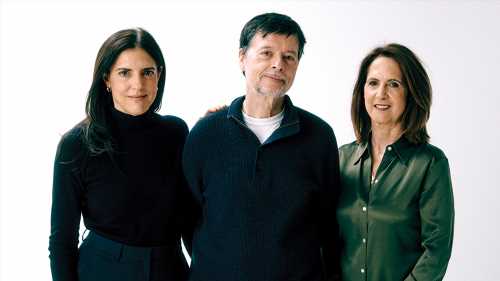Documentarian Emily Wachtel met Paul Newman and Joanne Woodward when she was two years old. They were neighbors in Westport. Conn, the dearest of family friends. “I knew them my whole life,” says Wachtel. “They are the reason I am in film.”
Wachtel, producer of CNN’s six-part docuseries “The Last Movie Stars,” which paints a sweeping, intimate, romantic portrait of the life, love and careers of Newman and Woodward, describes her childhood with the famed couple as if something out of a suburban New England dream.
“They were incredible people,” says Wachtel. “I was so young when I met them, and I didn’t understand what a movie star was at the time. But part of that is because they were so real. They’d pick you up to go to birthday parties, Joanne made sweaters. They had this big, beautiful barn on the property and they would entertain almost every weekend. Not in a formal way, but with everyone. Not necessarily actors. It was neighbors and friends from all walks of life. They would have everybody over and make hamburgers. They screened movies. I saw a lot of old movies with them, from ‘Lady in the Tramp’ to ‘The Effect of Gamma Rays on Man-in-the-Moon Marigolds.’ It was just part of the fabric of that household. And it was a gift.”
“They were very eccentric and fun,” Wachtel continues. “I remember going over to their house and they would put food in the oven and they said there was a little man named Charlie who lived in the oven. And I remember coming home and telling my mother the Newman’s have a little man in their oven.”
Beyond “The Last Movie Stars,” the slate of Emmy contenders in the documentary category is rife with projects produced and directed by women, projects that elevate the impact of historical female figures who have left an indelible stamp on society. “The 1619 Project” (Netflix), directed by Nikole Hannah-Jones, “Harry & Meghan” (Netflix), directed by Liz Garbus, and “The U.S. and the Holocaust,” co-directed by Sarah Botstein and Lyn Novick (along with Ken Burns) are examples of docuseries championing women’s stories.
For Wachtel, making “The Last Movies Stars,” directed by Ethan Hawke and exec produced by Martin Scorsese, was, in effect, a love letter to those shared adolescent experiences. Bolstering the side of Woodward that so many did not fully appreciate–from her acting prowess to her boundless love for her children–was an added boon to this endeavor.
“In that household, she was the actress, and he was the movie star,” says Wachtel. “But let me be clear: there was no him without her. You must know that.”
In “The U.S. and the Holocaust,” Botstein and Novick chronicled the unspeakable pain and trauma suffered by Jews at the hands of the Nazis. Telling the stories of the women was crucially important.
“It’s impossible not to think about what the impact of this catastrophe was on women,” says Novick.
“For me, it was the family separation. [The stories] killed me as a mother and a daughter–but, really, as a mother. I’ve seen movies, I’ve read books, but there was something about meeting [the survivors] who had been separated from their parents, and then not knowing if they’re going to see them again. That’s just something I could really key into as a human being.”
“I think women in times of conflict are always interesting to study because so much of the focus tends to be on men,” adds Botstein. “So, we’re always interested in that. We had a lot of conversations about family separation, including the whole Kindertransport. Yes, it’s wonderful that governments and countries wanted to take children–but why not take their families? What kind of a secondary tertiary trauma does that lend itself to? And America couldn’t even do that.”
Botstein and Novick worked hard to give voice to the fearless female reporters who played a key role in alerting the world to the horrors of the Holocaust. These women, like so many others, deserve to be known.
“Hearing what these women wrote, how they thought about things and how they were getting ahead of it–that was just incredible,” says Botstein. “Focusing on the women who were behind the scenes helping to rescue Jews and working for the nonprofit aid organizations and religious groups–so often these women behind the scenes are slightly less visible. We wanted to put them up front.”
Read More About:
Source: Read Full Article
